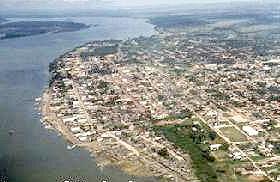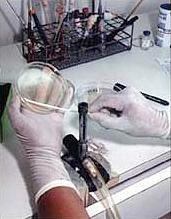|
The National Department for Mineral Production estimates that around 600 tons of mercury was thrown into the Tapajós River, one of the biggest tributaries of the Amazon River, over a 10-year period.
This mercury enters into the circle of life, through the small species like algae and vegetarian fishes. These end up feeding some carnivorous species which are very popular in the Amazon menu, like tucunaré and pirarucu.
Other studies have shown that the level of mercury in these species makes them unsuitable for human consumption. When humans consume them, the mercury in their bodies is ingested but not excreted, and higher and higher concentrations accumulate in the blood. Then, it passes from mother to child.
In addition, contamination by mercury may cause irritation of skin and eyes, neurological problems, joint pains, fainting, loss of appetite, diarrhoea and learning deficiencies in children. According to scientists at the institute, some of the effects of the metal on human health have yet to be discovered by science.
The study by Evandro Chagas Institute, a reference
center for tropical diseases, is the first of such detail
conducted in mining areas of the Amazon forest.
In the future, researchers at the institute intend to keep
studying 200 of the contaminated children to track the
long-term effects of the mercury's presence in their bodies.
As they grow older the contamination in their bodies
could become even worse, as the children will stay in
the area and suffer further exposure to the metal through
their food.
|

